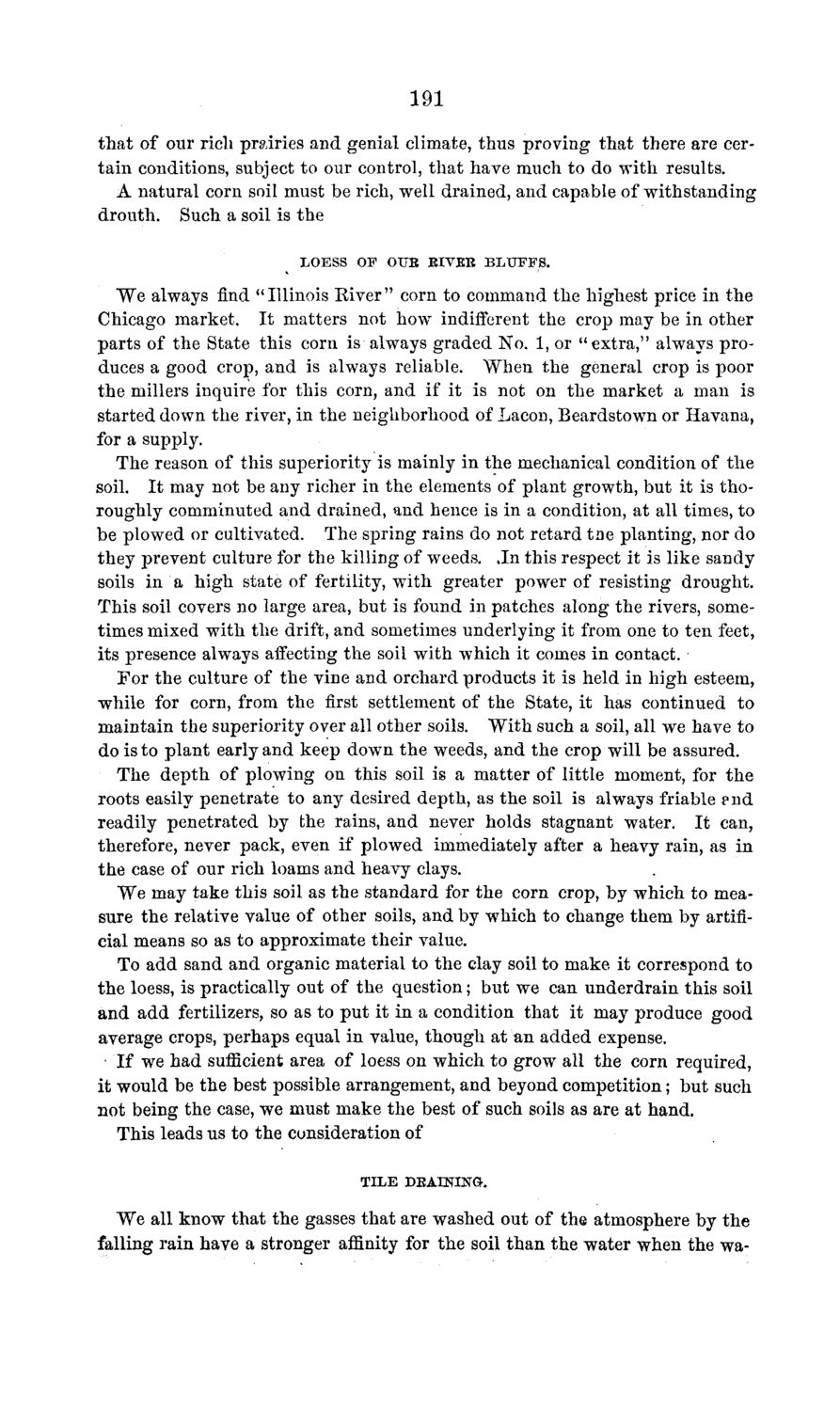| |
| |
Caption: Board of Trustees Minutes - 1869
This is a reduced-resolution page image for fast online browsing.

EXTRACTED TEXT FROM PAGE:
191 that of our rich prairies and genial climate, thus proving that there are certain conditions, subject to our control, that have much to do with results. A natural corn soil must be rich, well drained, and capable of withstanding drouth. Such a soil is the LOESS OP OUR RIVER B L U F F S . We always find "Illinois River" corn to command the highest price in the Chicago market. It matters not how indifferent the crop may be in other parts of the State this corn is always graded No. 1, or "extra," always produces a good crop, and is always reliable. When the general crop is poor the millers inquire for this corn, and if it is not on the market a man is started down the river, in the neighborhood of Lacon, Beardstown or Havana, for a supply. The reason of this superiority is mainly in the mechanical condition of the soil. It may not be any richer in the elements of plant growth, but it is thoroughly comminuted and drained, and hence is in a condition, at all times, to be plowed or cultivated. The spring rains do not retard tne planting, nor do they prevent culture for the killing of weeds. J n this respect it is like sandy soils in a high state of fertility, with greater power of resisting drought. This soil covers no large area, but is found in patches along the rivers, sometimes mixed with the drift, and sometimes underlying it from one to ten feet, its presence always affecting the soil with which it comes in contact. For the culture of the vine and orchard products it is held in high esteem, while for corn, from the first settlement of the State, it has continued to maintain the superiority over all other soils. With such a soil, all we have to do is to plant early and keep down the weeds, and the crop will be assured. The depth of plowing on this soil is a matter of little moment, for the roots easily penetrate to any desired depth, as the soil is always friable ?nd readily penetrated by the rains, and never holds stagnant water. It can, therefore, never pack, even if plowed immediately after a heavy rain, as in the case of our rich loams and heavy clays. We may take this soil as the standard for the corn crop, by which to measure the relative value of other soils, and by which to change them by artificial means so as to approximate their value. To add sand and organic material to the clay soil to make it correspond to the loess, is practically out of the question; but we can underdrain this soil and add fertilizers, so as to put it in a condition that it may produce good average crops, perhaps equal in value, though at an added expense. If we had sufficient area of loess on which to grow all the corn required, it would be the best possible arrangement, and beyond competition; but such not being the case, we must make the best of such soils as are at hand. This leads us to the consideration of T I L E DRAINING. We all know that the gasses that are washed out of the atmosphere by the falling rain have a stronger affinity for the soil than the water when the wa-
| |